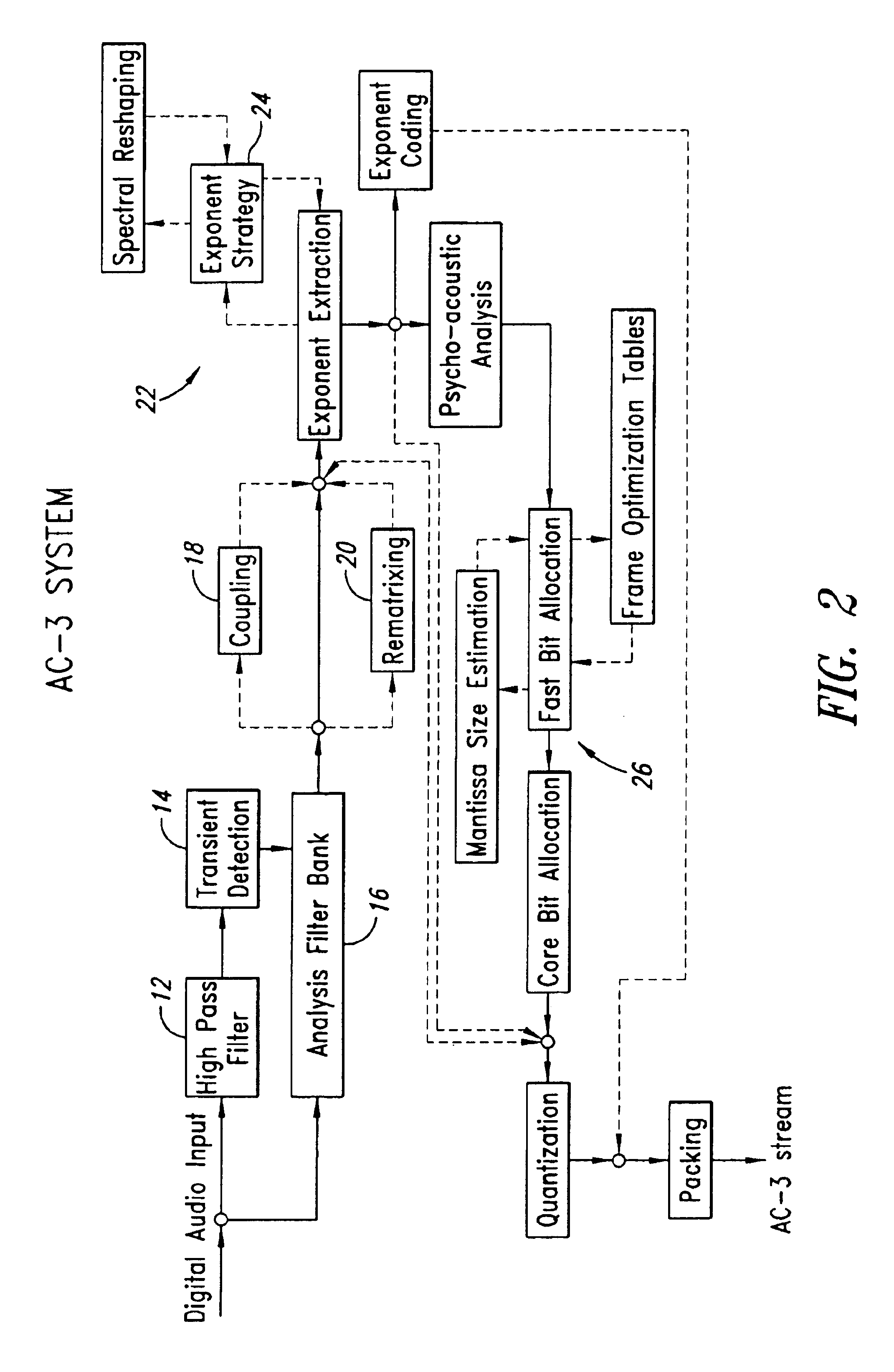Fast frame optimization in an audio encoder
a fast frame optimization and encoder technology, applied in the field of audio encoders, can solve the problems of high quantization errors, audible distortion, high memory and computation requirements, and achieve the effect of avoiding expensive back-tracking
- Summary
- Abstract
- Description
- Claims
- Application Information
AI Technical Summary
Benefits of technology
Problems solved by technology
Method used
Image
Examples
Embodiment Construction
[0042]The input to the AC-3 audio encoder comprises stream of digitized samples of the time domain audio signal. If the stream is multi-channel the samples of each channel appear in interleaved format. The output of the audio encoder is a sequence of synchronization frames of the serial coded audio bit stream. For advanced audio encoders, such as the AC-3, the compression ratio can be over ten times.
[0043]FIG. 1 shows the general format of an AC-3 frame. A frame consists of the following distinct data fields:[0044]a synchronization header (sync information, frame size code)[0045]the bit-stream information (information pertaining to the whole frame)[0046]the 6 blocks of packed audio data[0047]two CRC error checks
[0048]The bulk of the frame size is consumed by the 6 blocks of audio data. Each block is a decodable entity, however not all information to decode a particular block is necessarily included in the block. If information needed to decode blocks can be shared across blocks, the...
PUM
 Login to View More
Login to View More Abstract
Description
Claims
Application Information
 Login to View More
Login to View More - Generate Ideas
- Intellectual Property
- Life Sciences
- Materials
- Tech Scout
- Unparalleled Data Quality
- Higher Quality Content
- 60% Fewer Hallucinations
Browse by: Latest US Patents, China's latest patents, Technical Efficacy Thesaurus, Application Domain, Technology Topic, Popular Technical Reports.
© 2025 PatSnap. All rights reserved.Legal|Privacy policy|Modern Slavery Act Transparency Statement|Sitemap|About US| Contact US: help@patsnap.com



